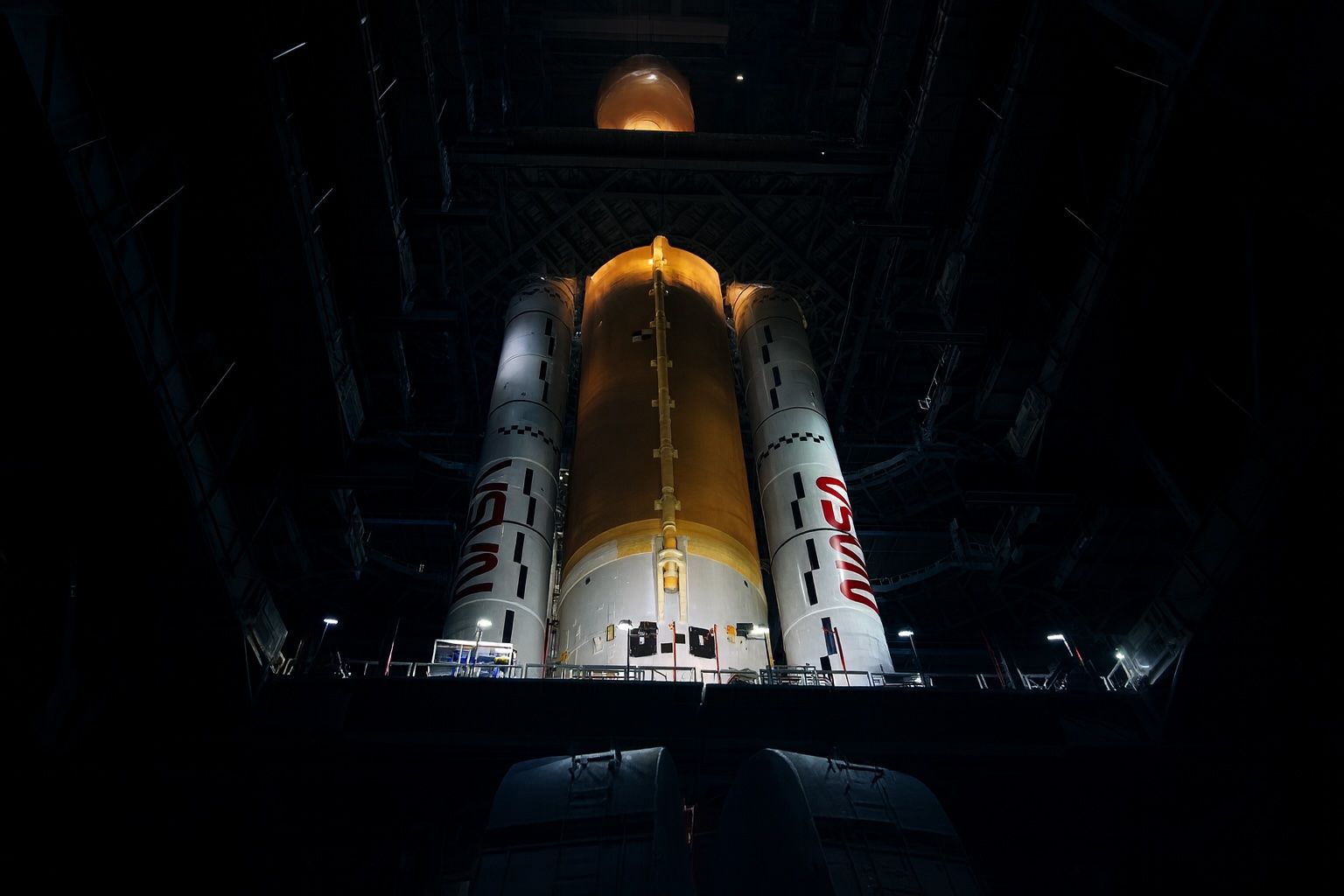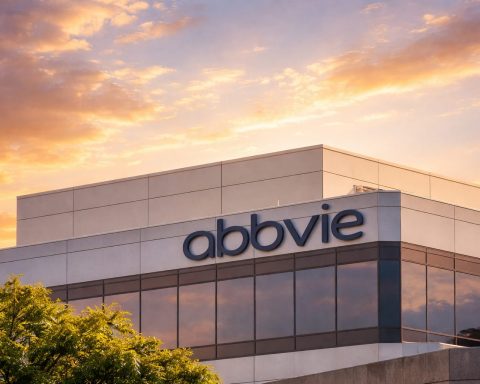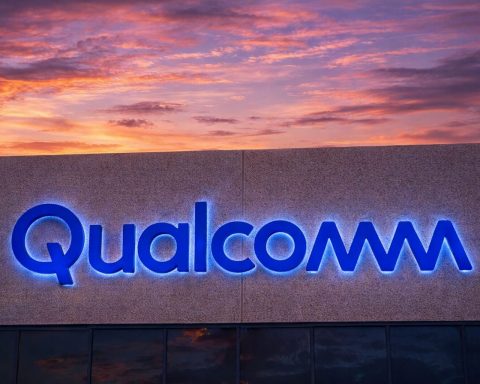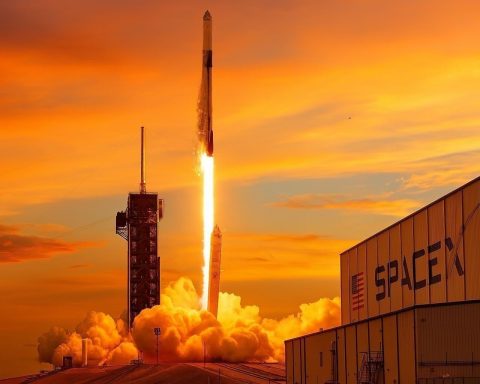- NASA reopens lunar lander bid: U.S. space agency chief Sean Duffy announced that NASA will open the Artemis III Moon-landing contract to competition amid SpaceX’s delays, inviting rivals like Jeff Bezos’ Blue Origin to bid [1] [2]. Duffy said, “I think we’ll see companies like Blue get involved,” emphasizing that NASA won’t “wait for one company” to get astronauts back to the Moon [3] [4].
- Race to beat China’s 2030 goal: Artemis III – the first crewed lunar landing since 1972 – was planned for 2027 with SpaceX’s Starship [5]. But with China targeting its own Moon landing by 2030, NASA now aims for a 2028 U.S. landing to win this “second space race” [6] [7]. President Donald Trump (re-elected in 2024) has pressed NASA to ensure Americans return to the Moon before his term ends in January 2029 [8] [9].
- SpaceX Starship behind schedule:Elon Musk’s SpaceX, which won the $4.4 billion Artemis III lander contract in 2021, has struggled to develop its Starship lunar spacecraft on schedule [10]. The 11th Starship test flight took place this month after a series of failed attempts [11], and the vehicle has yet to reach orbit or carry crew, raising NASA’s concern about relying solely on SpaceX [12]. “They’re behind schedule, and so the president wants to make sure we beat the Chinese,” Duffy noted bluntly [13].
- Blue Origin and others step up: Bezos’ Blue Origin (developer of the Blue Moon lander) protested NASA’s sole-source award to SpaceX in 2021 and later won a $3.4 billion contract to land astronauts on Artemis V in 2029 [14] [15]. Now NASA’s shift gives Blue Origin a shot at snatching the Artemis III mission. “I’m going to let other space companies compete with SpaceX, like Blue Origin… Whatever one can get us there first to the Moon, we’re going to take,” Duffy said [16]. NASA hasn’t yet detailed how the reopened bid will work or be funded, but Duffy hinted at “two potential companies” teaming up for the 2028 landing [17] [18].
- Artemis II on track as precursor: Meanwhile, Artemis II – a crewed 10-day Moon fly-around – remains on schedule. NASA recently mated Orion’s adapter to the SLS rocket and says Artemis II is on track for launch by April 2026 (possibly as early as February) [19] [20]. Artemis II will test all systems in lunar orbit, keeping a 2026 timeline even as the Artemis III landing slips roughly a year.
- Space stocks rally on lunar prospects: Investors are betting a broader lunar landing race will boost the space sector. Rocket Lab (NASDAQ: RKLB) – seen as a publicly traded alternative to SpaceX – has seen its stock surge over 170% in 2025 (and 630% year-over-year) amid impressive launch progress [21]. Morgan Stanley analysts even hiked their price target on Rocket Lab to $68 from $20, calling it “an earlier-stage alternative to SpaceX” poised to meet growing launch demand [22]. Intuitive Machines (NASDAQ: LUNR), a small-cap company building lunar landers and support services, saw its shares jump 24% in one day after reporting new NASA contracts and revenue growth [23]. The Houston-based Intuitive provides communications and navigation services for NASA’s Artemis program [24], and its order backlog is “predominantly linked” to NASA lunar missions [25]. Even traditional contractors like Lockheed Martin, Boeing, and Northrop Grumman – which build Orion and SLS hardware – stand to gain from any acceleration of Artemis [26]. Newer entrants are on the rise too: Karman Space & Defense (NYSE: KRMN), an Orion components supplier, recently went public and has garnered bullish analyst coverage (price targets up to $100) amid the Artemis supply-chain boom [27].
NASA Reopens Moon Lander Contract Amid SpaceX Delays
NASA’s surprise move to reopen the Artemis III lunar lander contract marks a dramatic shift in the U.S. return-to-the-Moon effort. Acting NASA Administrator Sean Duffy – who also serves as U.S. Transportation Secretary – revealed on Monday that NASA will no longer rely exclusively on SpaceX for the planned Moon landing mission. “I’m in the process of opening that contract up,” Duffy said, explaining that SpaceX’s development schedule has slipped too much [28]. SpaceX’s Starship rocket was originally slated to carry astronauts from lunar orbit to the surface in late 2025 or 2026, but multiple testing setbacks forced NASA to push the Artemis III landing to 2027 [29]. Even that timeline now looks tenuous.
“We’re going to have a space race in regard to American companies competing to see who can actually get us back to the moon first,” Duffy told Fox News, underscoring that NASA wants competition on the project [30]. His message was clear: SpaceX’s delays cannot hold the Moon program hostage. Duffy stressed the U.S. must get astronauts on the lunar surface “in this President’s term” – i.e. by 2028 – to stay ahead of China’s ambitions [31]. Under the current plan, China’s space agency (CNSA) is aiming to land taikonauts on the Moon by 2030, which has raised alarm in Washington about a potential race for lunar dominance [32]. Duffy warned that SpaceX running behind “could put the U.S. behind its rival” in that race [33].
SpaceX’s progress with Starship has been remarkable yet slower than hoped. The company has launched 11 prototype Starship flights from its Texas development site, including a high-profile test on Oct. 13, 2025. That test (Starship Flight 11) aimed to validate upgrades after a string of explosions earlier in the program [34]. SpaceX did achieve a fully successful flight in August, deploying Starship’s first payload to orbit and meeting all major objectives [35]. However, Starship has not yet flown with astronauts or reached full orbital operational status, and each test flight requires regulatory approval and engineering fixes [36]. NASA officials have grown increasingly uneasy with the uncertainty. “They push their timelines out, and we’re in a race against China,” Duffy said of SpaceX, noting that both President Trump and NASA leadership are unwilling to cede the Moon to delays [37] [38].
Blue Origin Poised to Challenge SpaceX
Duffy’s announcement effectively reopens a door that was closed in 2021, when NASA controversially awarded the human lunar lander contract solely to SpaceX. At the time, NASA’s budget constraints led it to pick only one provider for Artemis III, though it had originally intended to fund two parallel landers [39]. That sole-source decision prompted a legal protest from Blue Origin, which argued NASA should maintain competition. Blue Origin’s protest (and subsequent lawsuit) failed to overturn the award [40], but it did shine a spotlight on the risks of a single-supplier approach. “It was largely believed that NASA would select two companies… which would have provided competition and redundancy should one fall behind schedule,” the Houston Chronicle noted of the original Artemis bid backlash [41]. Now, in an ironic turn, NASA is essentially adopting Blue Origin’s argument: competition is needed to ensure success.
Importantly, Blue Origin will now get its chance at the Artemis III mission. In 2023, NASA selected Blue Origin for a $3.4 billion contract to build a lander for Artemis V (a later mission in 2029) [42]. Blue Origin’s proposed lander, called “Blue Moon,” is being developed by a consortium known as the National Team – including aerospace heavyweights Lockheed Martin, Boeing, Draper, Astrobotic, and Honeybee Robotics [43]. That vehicle is scheduled for a 2029 landing, but with NASA’s new openness, Blue Origin could accelerate its timeline or propose an earlier variant to vie for Artemis III in 2028.
Duffy explicitly name-dropped Blue Origin as a contender. “I think we’ll see companies like Blue get involved, and maybe others,” he said, referring to Bezos’s firm [44]. He even suggested NASA might end up with “two potential companies” working on the Artemis III landing, effectively creating redundancy [45]. In a CNBC interview, Duffy made his stance plain: “We’re not going to wait for one company. We’re going to push this forward and win the second space race against the Chinese,” he said, while praising American industry’s capacity to step up [46]. He added that whichever company can land astronauts first will get the nod: “Whatever one can get us there first to the moon, we’re going to take” [47].
Besides Blue Origin, other players might enter the fray. Space industry observers point to teams like Dynetics (a Leidos subsidiary that was a previous lander bidder) or even international partnerships that could propose alternative lunar landers. For now, Blue Origin is the most likely beneficiary – its CEO Jeff Bezos reportedly discussed Artemis plans with President Trump over the summer [48], especially during a period when Musk’s relationship with the White House was strained. Blue Origin has kept a lower public profile on its lander progress compared to SpaceX’s splashy Starship tests. The Blue Moon lander hasn’t flown yet (its development is more traditional and secretive), but NASA’s confidence in Blue was shown by that Artemis V award in 2023. With Monday’s announcement, Blue Origin’s second chance may come even sooner than 2029.
NASA has not yet released specifics on how it will “open up” the Artemis III contract. It’s unclear whether the agency will split the mission between two landers or select whichever provider (SpaceX or Blue Origin, or another) is ready first for 2028. Funding is another big question – Congress originally appropriated only enough for one lander in 2021 [49]. Duffy did not detail where additional money would come from for a second lander. Some analysts speculate NASA could reallocate budgets or seek supplemental funding given the high geopolitical stakes of the Moon race. For now, a NASA spokesperson simply said they had no further comment yet on Duffy’s remarks [50]. It’s evident, however, that NASA is putting SpaceX on notice: the agency is willing to change course to ensure Artemis succeeds on time.
Artemis Program: Timeline Adjustments and Strategy
Artemis II, the immediate precursor to the Moon landing, remains full steam ahead even as Artemis III plans get reshuffled. Artemis II will be a crewed mission that loops around the Moon and returns, intended as a final dress rehearsal for the landing. Despite some earlier schedule slips, Artemis II’s hardware is now coming together. In early October, NASA teams in Florida mated Orion’s stage adapter to the Space Launch System (SLS) rocket, a key integration milestone [51]. This adapter will connect the Orion spacecraft to the rocket’s upper stage and even carry some small secondary payloads to deep space [52]. With Orion itself to be mounted next, officials say Artemis II is on track for launch by April 2026 [53]. In fact, Duffy indicated that launch could be moved up to February 2026 if testing goes exceedingly well [54]. That mission will send four astronauts on a 10-day journey around the Moon, marking the first time humans travel beyond low-Earth orbit since Apollo. Artemis II involves a broad swath of contractors – from the SLS rocket built by Boeing and Northrop Grumman to the Orion capsule built by Lockheed Martin [55] – and those providers report that the hardware is nearly ready for final checks.
The Artemis III mission was originally slated for about one year after Artemis II, but NASA in late 2022 acknowledged the landing date would slip into 2027 [56]. That schedule assumed SpaceX’s Starship would be fully certified and tested (including at least one uncrewed Moon landing demo) in time to carry Artemis astronauts in 2027. Now, with 2027 just two years away and Starship still in development, NASA is adjusting its expectations. Duffy’s 2028 target aligns with what many analysts had already suspected – that Artemis III would more realistically occur in 2028 given the technical challenges.
One silver lining: if NASA brings in a second lander provider, Artemis III might actually stay on track for 2028 rather than slipping further. Redundancy could enable parallel progress. SpaceX continues to iterate rapidly on Starship, and could potentially perform an orbital flight with the Starship Human Landing System in 2026 or 2027 if the test program accelerates. Blue Origin, for its part, will likely try to fast-track its Blue Moon lander – possibly by modifying the design to be ready for an earlier demo in 2028. It’s a tall order, but not impossible with sufficient funding and focus.
The broader Artemis program strategy remains intact: NASA aims to establish a sustainable human presence on and around the Moon before the end of the decade. That includes building the Lunar Gateway space station in lunar orbit and conducting regular missions after Artemis III. Having multiple lander systems could be a feature, not a bug, of this long-term plan – much as NASA uses multiple spacecraft for ISS resupply and crew transport. Duffy hinted that healthy competition between U.S. companies could speed innovation and guard against any single point of failure [57]. In Duffy’s words, “We’re going to have a space race… American companies competing to see who can get us back to the moon first.” [58] This competition, he suggests, ultimately strengthens the Artemis program’s chances of beating international rivals and achieving a permanent foothold on the Moon.
Geopolitics are undoubtedly a driving force. China’s lunar program has been ramping up: Beijing has been testing new heavy-lift rockets and a lunar lander in preparation for a crewed Moon mission in the early 2030s [59]. If the U.S. can land in 2028, it will secure bragging rights for a return to the Moon before China’s first arrival. NASA leadership has explicitly tied Artemis to this global competition. “The president wants to make sure we beat the Chinese,” Duffy said of the Artemis schedule [60]. This sense of urgency now permeates NASA’s plans – and has opened the door for more industry players to join the effort.
Space Stocks Soar on Lunar Ambitions
News of NASA’s revamped approach sent ripples through the space industry – not just in engineering circles but on Wall Street as well. While SpaceX and Blue Origin are privately held, many publicly traded companies stand to benefit from an expanded Artemis program and the rush to the Moon. Investors appear to be wagering that NASA’s urgency (and potential new contracts) will translate into opportunities for commercial space firms.
One of the biggest winners has been Rocket Lab USA. Often touted as the closest thing to a “mini-SpaceX” on the stock market, Rocket Lab has steadily grown its launch business and is developing a larger Neutron rocket for future missions. After Duffy’s comments, Rocket Lab’s stock (NASDAQ: RKLB) continued its remarkable climb. As of mid-October 2025, RKLB shares have surged about 172% year-to-date and over 600% in the past 12 months [61]. Major banks have taken notice: on October 13, Morgan Stanley raised its price target for Rocket Lab to $68 (from just $20), explicitly citing the company’s emergence as a “public market alternative to SpaceX” amid booming demand for launch capacity [62]. Another firm, Baird, initiated coverage with an even more optimistic $83 target [63]. Analysts point out that Rocket Lab’s reliable Electron rocket and forthcoming medium-lift Neutron vehicle could capture missions if NASA diversifies beyond SpaceX – or if delays at SpaceX create openings for others [64]. With Neutron aiming to compete with SpaceX’s Falcon 9 in a few years, Rocket Lab is positioning itself for the uptick in government and commercial launches. However, after such a torrid run, some caution the stock may be overbought in the short term [65].
Another player in focus is Intuitive Machines. This Texas-based company isn’t vying to carry Artemis astronauts, but it is building smaller robotic landers (Nova-C) and providing vital support services for NASA’s lunar program. Intuitive Machines (NASDAQ: LUNR) went public in 2023 and has contracts under NASA’s Commercial Lunar Payload Services (CLPS) initiative to deliver science payloads to the Moon’s surface. It also operates lunar communications networks that NASA uses. In March 2025, Intuitive Machines’ stock jumped 24% in a single day after the company reported a big revenue uptick and a strong cash position due to new NASA contracts [66]. “Intuitive Machines’ primary source of revenue is not from its launch missions, but rather from its space contracts,” one equity analyst noted [67], referring to agreements supporting Artemis. The company’s communications services effectively link lunar landers and orbiters to Earth’s ground stations, a critical infrastructure for Artemis missions [68]. Intuitive’s backlog of orders ballooned to over $328 million, “predominantly linked to contracts with NASA,” according to its earnings report [69]. With NASA’s Moon plans growing, Intuitive Machines stands to gain more business – a fact not lost on investors driving the stock. (That said, LUNR shares have been volatile, and the company faced technical hiccups on a recent lander attempt, reminding that space is a risky sector.)
Even the large, established aerospace contractors saw a boost in sentiment. Lockheed Martin (LMT), Boeing (BA), and Northrop Grumman (NOC) are integral to Artemis – Lockheed builds the Orion crew capsule, Boeing the SLS core rocket stage, and Northrop the solid boosters. These stocks tend to move more on broader defense spending news than on a single NASA development, but the reaffirmation of Artemis schedules is a long-term positive for them. Each of those companies’ Artemis-related systems (Orion, SLS, etc.) is either on track or even ahead of schedule for the next mission, according to Duffy [70]. If NASA injects more funds to accelerate lunar lander work, it could mean new subcontracts and task orders flowing to these primes (for example, Lockheed is part of Blue Origin’s lander team as well [71]).
One newly public company exemplifies the space infrastructure boom tied to Artemis: Karman Space & Defense (NYSE: KRMN). Karman is a specialized manufacturer that produces mission-critical hardware for NASA’s Orion spacecraft and other space/defense systems [72]. It was formed from the merger of several aerospace suppliers and started trading on the NYSE in mid-2025. Since then, Karman’s stock has climbed from the mid-$20s to around $75 per share [73]. Analysts have been bullish – in September, Raymond James initiated coverage with a $100 price target and a Strong Buy rating [74]. The optimism stems from Karman’s role in Artemis (for instance, it provides the explosive hatch release mechanisms and other components for Orion capsules used in Artemis missions [75] [76]). As Artemis progresses, suppliers like Karman see a steady pipeline of work, and investor appetite for “picks and shovels” space companies has increased.
It’s worth noting that SpaceX’s delays don’t directly hurt any stock (since SpaceX isn’t publicly traded), but they have shifted investor focus toward who is accessible in the market. Some traders have even sought indirect ways to bet on SpaceX’s fortunes – for example, via Tesla (TSLA), given Elon Musk’s leadership overlap, or via funds like the Procure Space ETF. However, Tesla’s outlook is dominated by the electric car business, not space, and analysts currently rate TSLA stock as a Hold on average, with a price target implying downside [77]. For a pure space play, many favor Rocket Lab, or smaller caps like Astronautics and satellite firms.
Overall, the “new space race” ethos spurred by NASA’s announcement has energized the sector. “The space industry just got put on notice,” one tech publication observed after Duffy’s remarks [78]. The takeaway is that NASA’s urgency could mean more contracts, more innovation, and more investment flooding into the Moon effort. Of course, it also raises the stakes: whichever companies NASA selects (or continues to support) for Artemis III will carry not just astronauts, but also the mantle of America’s return to the Moon – and the pressure of a high-profile success or failure.
Disclosure: As this is a developing story, NASA is expected to release a formal solicitation or amendment for the Artemis III lander contract in the coming weeks, which will clarify the competition’s rules. SpaceX, for its part, has not publicly responded in detail to Duffy’s critiques, though Elon Musk has previously expressed confidence that Starship will land astronauts “well before 2030” (Musk has even floated 2028 as feasible if tests go right) [79]. For now, the Artemis program marches forward with a newly competitive spirit. NASA’s bet is that a little “Apollo-era” style rivalry – this time between private space titans – will ensure that Americans plant their boots in lunar soil on schedule, heralding a new era of exploration and outpacing any challengers in the process.
Sources: NASA/Reuters [80] [81]; Houston Chronicle [82] [83]; CNBC/TechBuzz [84] [85]; TipRanks [86]; TS² Space News [87]; MarketBeat/Investing [88] [89]; Reuters (Intuitive Machines) [90] [91]; Karman SD PR [92].
References
1. www.reuters.com, 2. www.reuters.com, 3. www.reuters.com, 4. www.expressnews.com, 5. www.reuters.com, 6. www.expressnews.com, 7. www.reuters.com, 8. m.economictimes.com, 9. www.reuters.com, 10. www.reuters.com, 11. www.tipranks.com, 12. www.expressnews.com, 13. www.reuters.com, 14. www.reuters.com, 15. www.expressnews.com, 16. www.expressnews.com, 17. www.techbuzz.ai, 18. www.techbuzz.ai, 19. ts2.tech, 20. www.reuters.com, 21. www.investing.com, 22. www.investing.com, 23. www.reuters.com, 24. www.reuters.com, 25. www.reuters.com, 26. www.reuters.com, 27. finviz.com, 28. www.reuters.com, 29. www.reuters.com, 30. www.reuters.com, 31. www.reuters.com, 32. m.economictimes.com, 33. www.reuters.com, 34. www.tipranks.com, 35. ts2.tech, 36. www.expressnews.com, 37. www.techbuzz.ai, 38. www.reuters.com, 39. www.expressnews.com, 40. www.expressnews.com, 41. www.expressnews.com, 42. www.reuters.com, 43. www.expressnews.com, 44. www.reuters.com, 45. www.techbuzz.ai, 46. www.expressnews.com, 47. www.expressnews.com, 48. www.reuters.com, 49. www.expressnews.com, 50. www.reuters.com, 51. ts2.tech, 52. ts2.tech, 53. ts2.tech, 54. www.reuters.com, 55. www.reuters.com, 56. www.reuters.com, 57. www.reuters.com, 58. www.reuters.com, 59. ts2.tech, 60. www.reuters.com, 61. www.investing.com, 62. www.investing.com, 63. www.investing.com, 64. www.investing.com, 65. www.investing.com, 66. www.reuters.com, 67. www.reuters.com, 68. www.reuters.com, 69. www.reuters.com, 70. www.reuters.com, 71. www.expressnews.com, 72. karman-sd.com, 73. investors.karman-sd.com, 74. finviz.com, 75. karman-sd.com, 76. karman-sd.com, 77. www.tipranks.com, 78. www.techbuzz.ai, 79. www.bloomberg.com, 80. www.reuters.com, 81. www.reuters.com, 82. www.expressnews.com, 83. www.expressnews.com, 84. www.techbuzz.ai, 85. www.techbuzz.ai, 86. www.tipranks.com, 87. ts2.tech, 88. www.investing.com, 89. www.investing.com, 90. www.reuters.com, 91. www.reuters.com, 92. karman-sd.com










